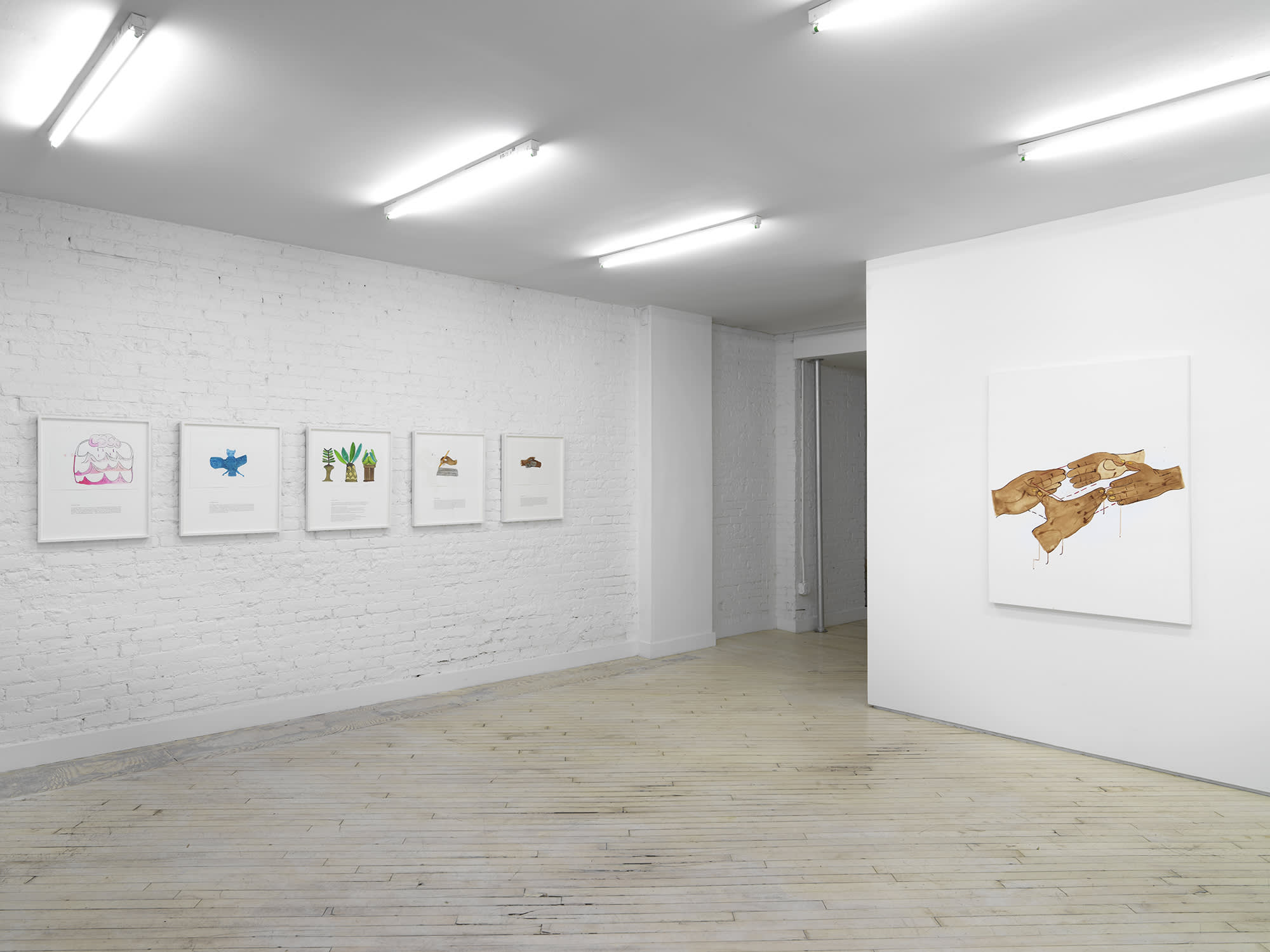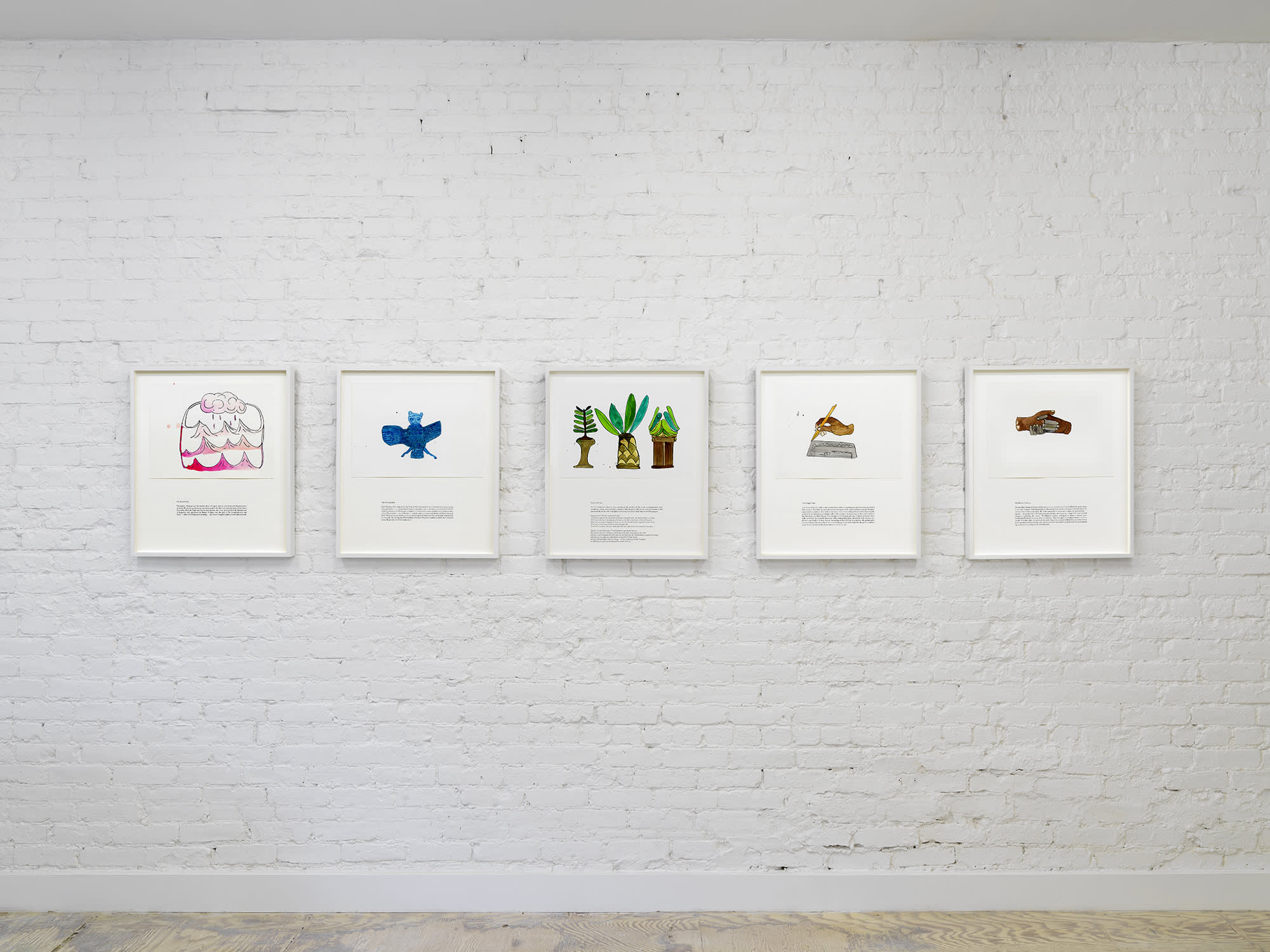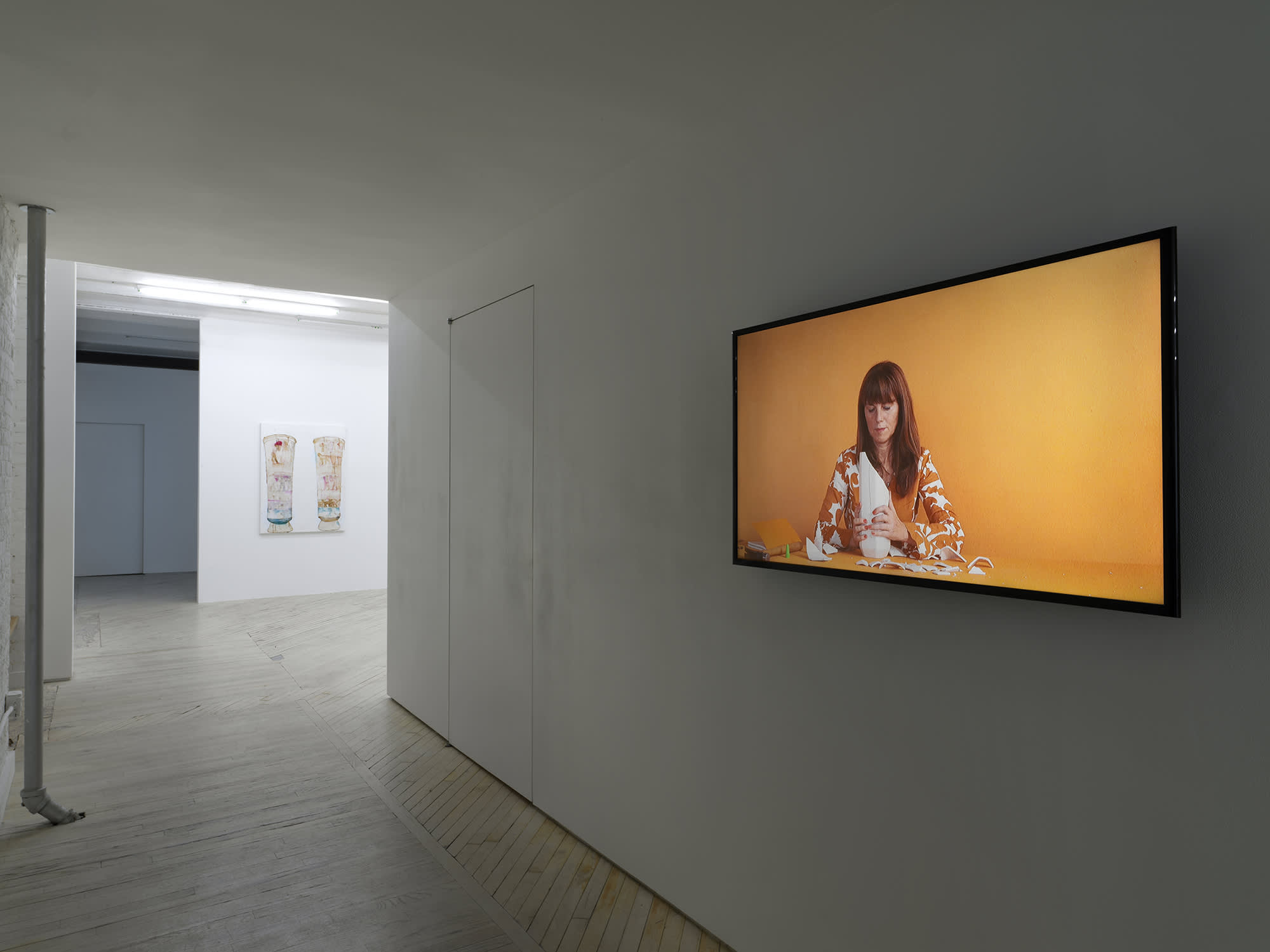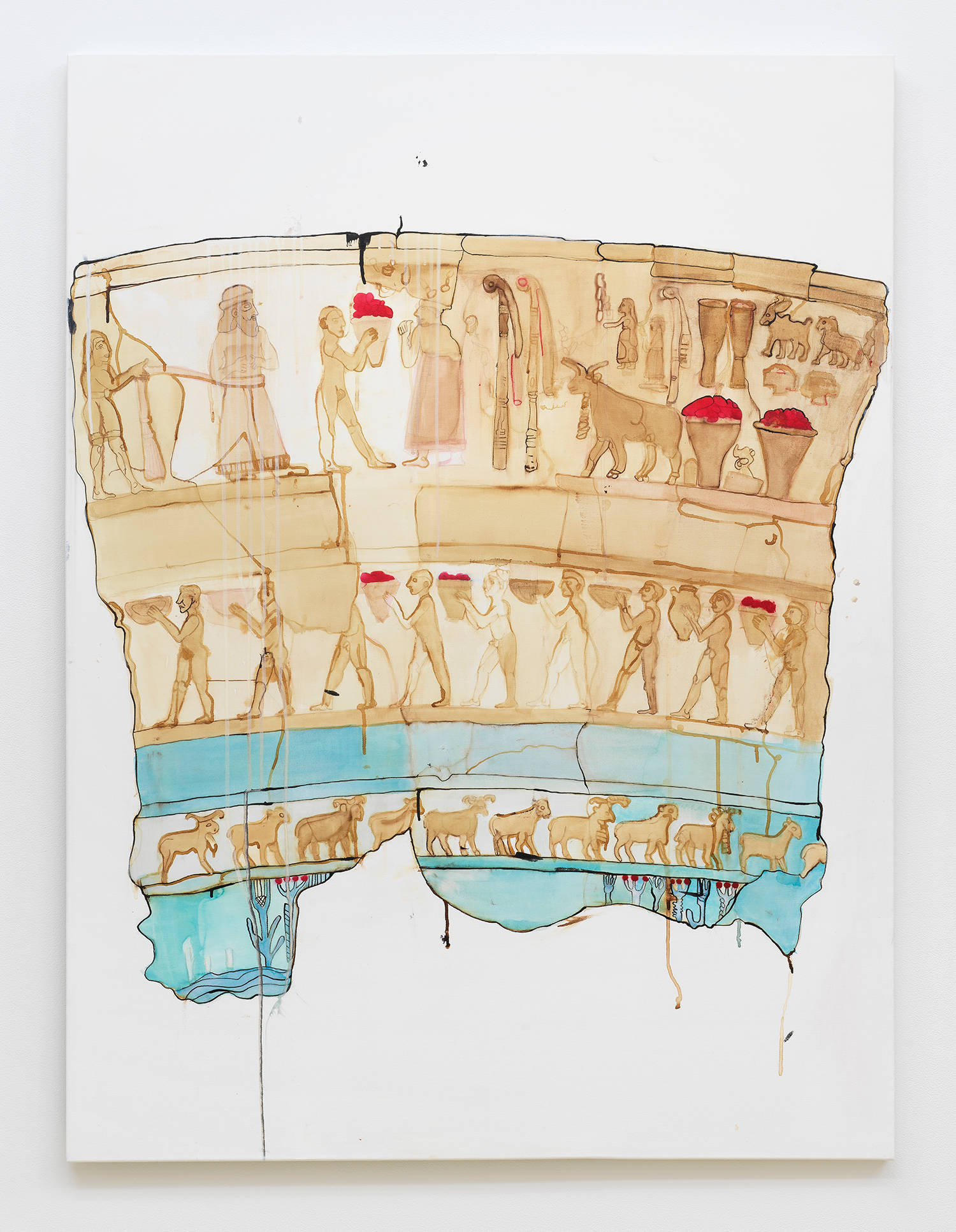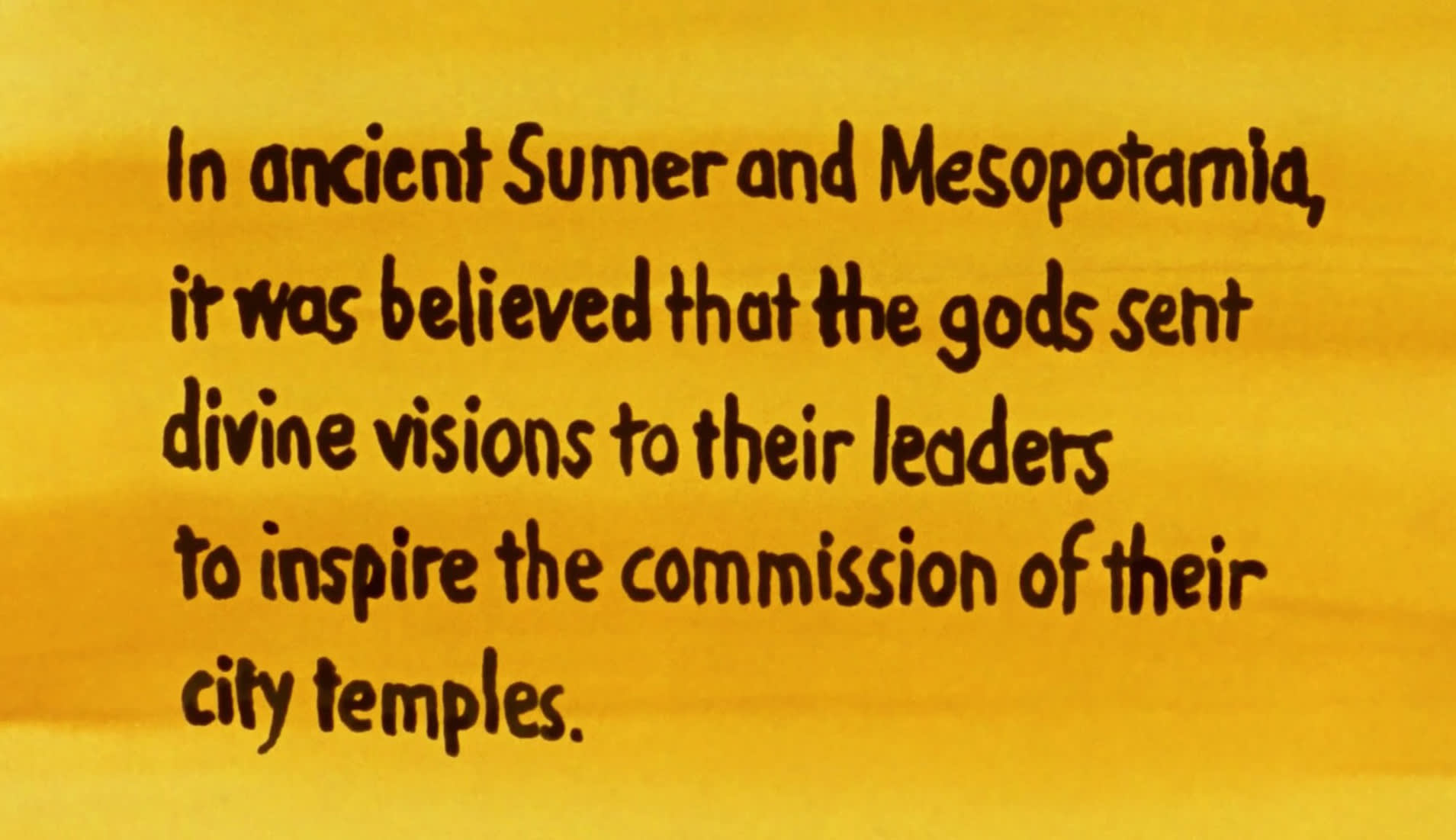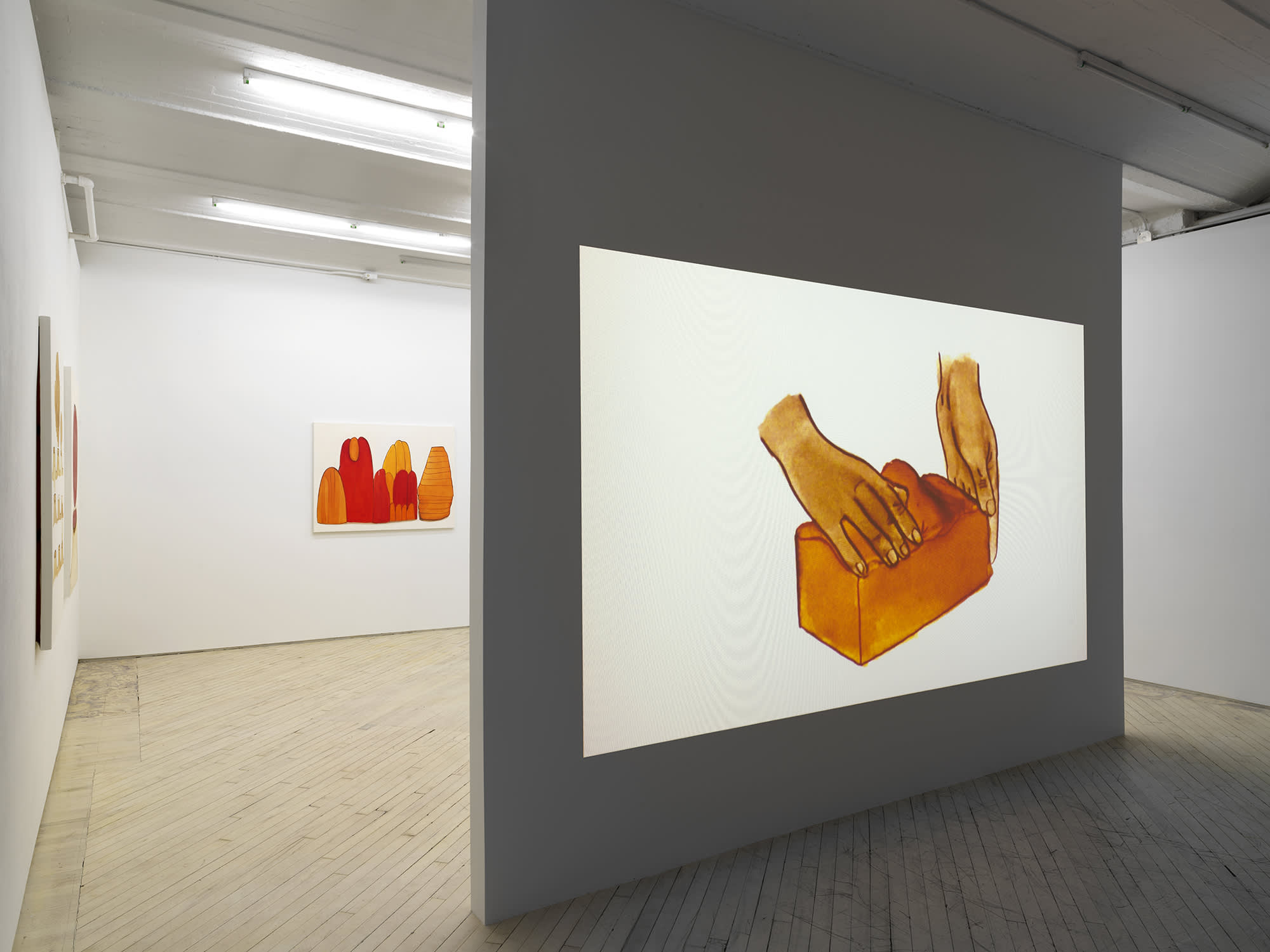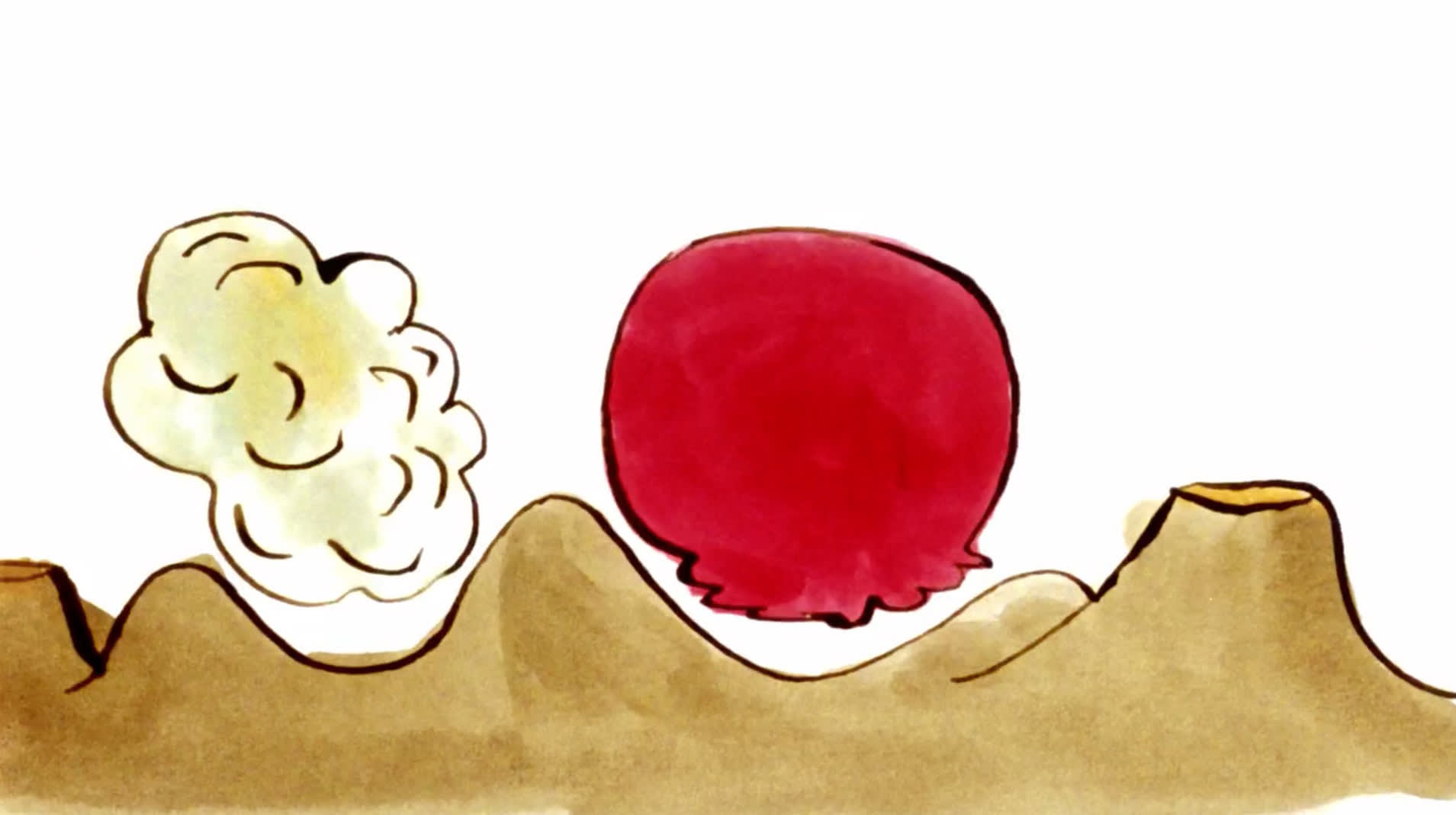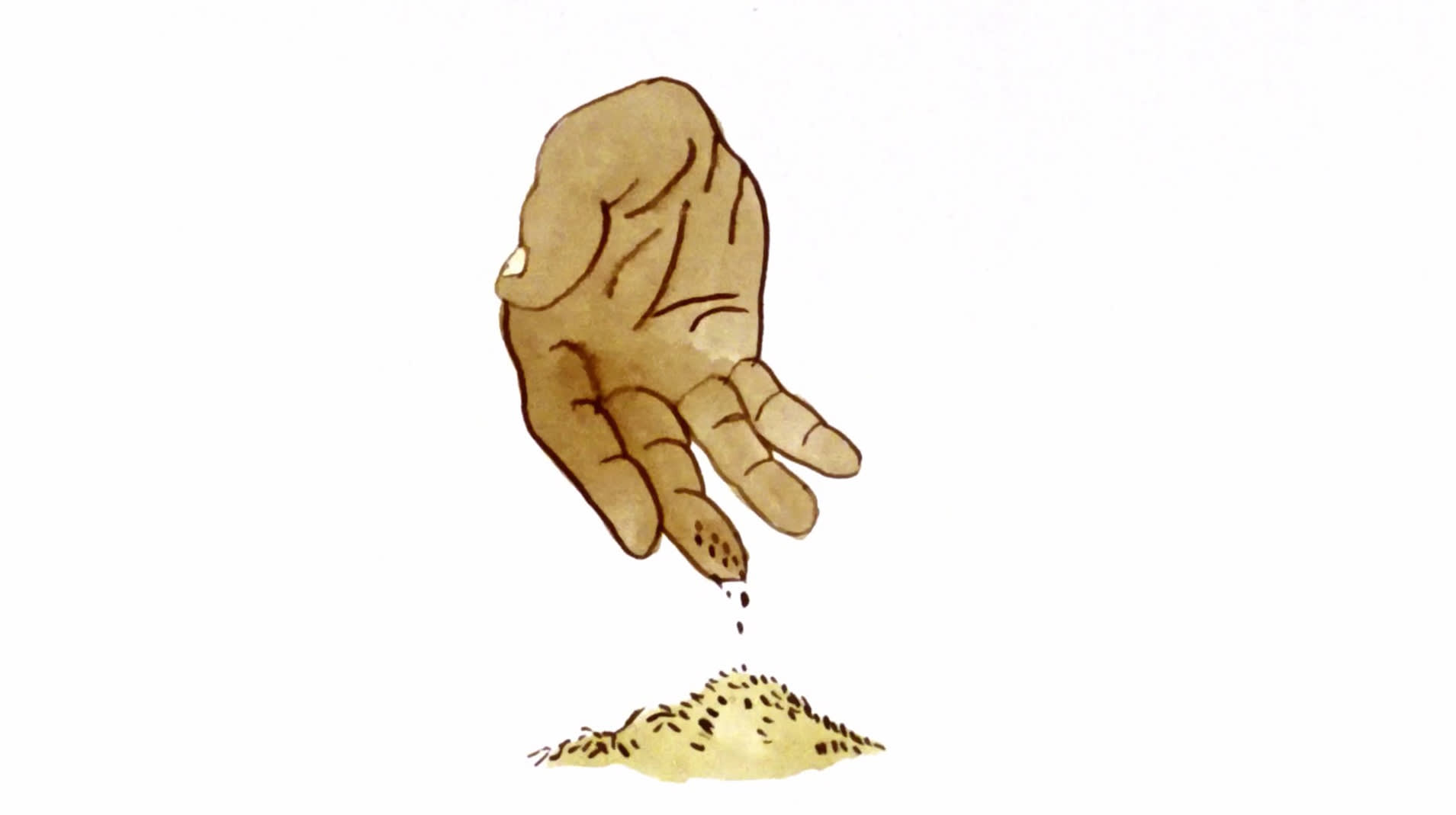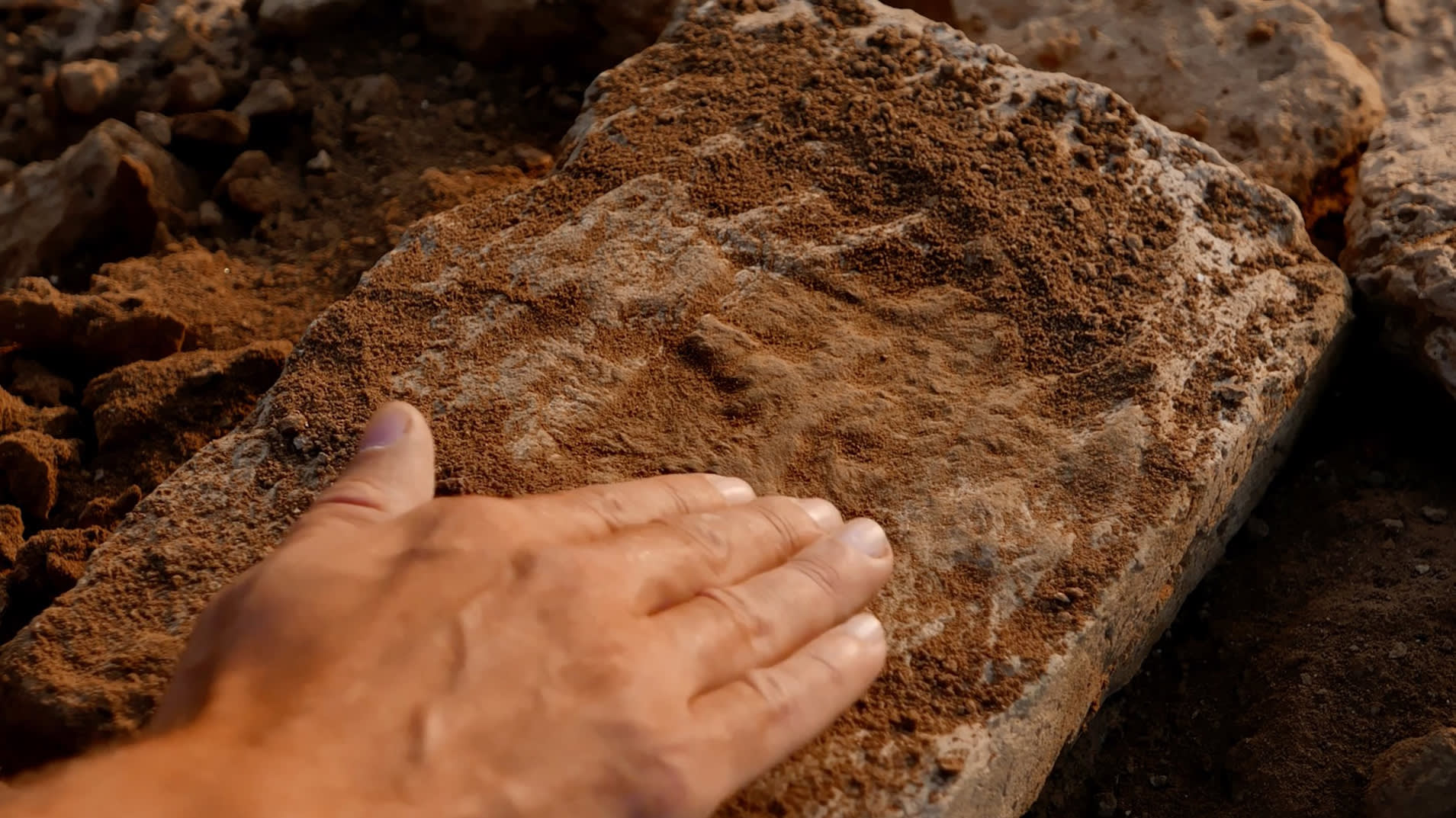Exhibition: Thunderbird
Christine Rebet Thunderbird November 4 - December 16 2018
Bureau is pleased to announce a solo exhibition by Christine Rebet, Thunderbird, the artist’s second with the gallery. Rebet is known for her insightful interpretations of history, refracted by her intuitive lens and translated into her main idiom of drawing. The exhibition features several different formats of her expressive hand, including animation, a performed live-action video, ink drawings and paintings on canvas. For this exhibition Rebet focuses on the story of a temple commissioned by the Sumerian ruler Gudea, dedicated to the god Ningirsu and his avatar the Thunderbird. It was believed that the gods sent a divine vision to Gudea, a dream that inspired the building of the temple. Rebet animates this sacred myth, which was found written into ancient terracotta cylinders, unlocking the narrative and spiritual potential within the clay. The remains of the temple of Ningirsu lie in the ancient city of Girsu, in current-day southern Iraq. This archaeological site was excavated between 1877 and 1933, unearthing some of the most important monuments of Sumerian art and architecture, including statues of King Gudea. Carved from black diorite stone, Gudea is often depicted seated and reverent with clasped hands, an example of which can be seen at the entrance to the Ancient Near East Art galleries at the Metropolitan Museum. A headless Gudea exhibited at the Louvre likewise sits with hands clasped in prayer, a tablet inscribed with a temple plan laid on his knees. This tablet is perhaps the earliest example of an architectural drawing: the plan for Ningirsu’s temple. Currently the temple site is the fieldwork venue for the British Museum’s “Iraq Scheme” led by archaeologist Dr. Sebastien Rey. The program’s mission is to train Iraqi archaeologists and international specialists in the detailed techniques and technologies of retrieval and rescue archaeology. Over the past several years Dr. Rey and Rebet have fostered a dialogue, exchanging his archaeological research and her interpretations of the symbolic content of the temple and its artifacts. Opening the exhibition is a series of ink drawings depicting elemental aspects of the temple’s origin — the Heroic God, the Thunderbird, Gudea’s Dream, the Hands of Gudea, the Temple Plan — all accompanied by texts written by Dr. Rey. At the center of the exhibition is a five-minute animation, Thunderbird, which imagines a dialogue between King Gudea and Nanshe, goddess of prophecy, whom he summons to help interpret his dream. The animation comprises 2,500 hand-inked drawings, opening with thunder and rain clouds which blossom forth with flowering plants; the wet earth then churning with molten energy as the red sun rises over the landscape. Eventually we see hands mixing mud to make the bricks for building the sacred temple. In a brief live-action sequence at the end of the film we see the hand of archaeologist Rey in the act of discovery: exposing a brick bearing a relief image of Ningirsu’s avatar and emblem, the Thunderbird. According to Dr. Rey, “The modern medium of animation proves extremely relevant as it reflects – I dare say mirrors – the ancient religious ritual of animating votive objects including temple statues, sacred bricks.” Animation finds an important paradigm in the ancient art forms of written scrolls and vase illustration. The continuity of a scrolling story along the contours of a vase or seal has a perfect analogy in hand-drawn animation, which stirs a stagnant image or text into a time-based experience. One of Rebet’s paintings depicts feet draped in fabric, referencing the foundation of animation: the walking sequence. Completing the exhibition is a series of paintings and video which consider the Uruk Vase, a monumental, carved alabaster vessel from the National Museum of Iraq in Baghdad, which has been damaged and repaired over millenia. The continuous form of the circular vase itself insists on the necessity of renewal: of a story that does not end and thus resists its own destruction. In the video, Manual of re-imagined archaeology: “The Uruk Vase,” Rebet studiously draws the vase’s carved reliefs onto a simple porcelain vessel. She then breaks it into several pieces, only to mend it back together. Rebet seeks to consider the land as a character, animating the site of struggle, resistance and regeneration of the land itself. Thunderbird can be seen as a response to the fragility of the Middle East’s major archaeological sites. Her work interprets the ancient myths and symbolism with sensitive intuition, offering a contemporary vision to summon the power and reverence imbued in the artifacts.
Christine Rebet (b. Lyon France, lives and works in New York), received her MFA from Columbia University and her BFA from Central Saint Martins School of Art and Design, London. Rebet has exhibited and held performances in various international contexts including: Bureau, New York; LACE, Los Angeles; Human Resources, Los Angeles; Kunsthal KAdE, Amersfoort, Netherlands; Grieder Contemporary, Zurich; AlbumArte, Rome; Sculpture Center, New York; the Institute of Contemporary Art, Singapore; the Cartier Foundation, Paris; Site Sante Fe, New Mexico; Le Magasin, Grenoble; Shanghai Art Museum; Parasol Unit, London; Kamel Mennour Gallery, Paris and Taka Ishii Gallery, Tokyo. Her films have been screened at various festivals in international locations including: Centre Dramatique National, Nanterre, France; Sursock Museum, Beirut, Lebanon; The Berlinale Short Film Competition; Hong Kong International Film Festival; Norwegian Film Festival, Grimstad; Fruehsorge Contemporary Drawing, Berlin; Oberhausen Film Festival, Germany; Jakarta International Film Festival and London Film Festival. Rebet’s work appears in the public collections of the Centre Georges Pompidou, Paris, France and the Musée d’Art Contemporain du Val-de-Marne, Vitry-sur-Seine, France.
Photography by Dario Lasagni
Film Credits: Thunderbird Director: Christine Rebet Produced by: Christine Rebet and Gabrielle Giattino Animation Assistants: Romane Granger, Julie de Halleux, Shi-Yen Huang, Nikolai Meltchakov, Louise Pignier Leroul, Lise Rémon Camera: Gustavo Jahn Shot on 16 mm in Berlin Editing: Fabrice Gerardi Editing Assistant: Joseph Elbaz Scan processing and color grading: Silverway Paris Soundtrack: Mirwais Music: Nasser Naama’Al ‘Amiriyya’“Le Luth de Bagdad”© Institut du Monde Arabe Voice over: Lisa Denem, Grayson Millwood, Simon Will Recorded by Patrick Petzold at Studio 206 Berlin Mixing: Benoit Héry YAP Paris Duration: 5 min 31 sec Footage organized by Sébastien Rey, shot on site at Tello, ancient Girsu, Iraq Scheme The British Museum, London Special Thanks to: Zainab Bahrani, François Darrasse, Lillian Davies, Vincent Dupuis, Fatima Yassir Husain, LaborBerlin, Jean-Marie Leau, Venetia Porter, François Prodromides, Fédéric Rebet, Lucie Régent, Sébastien Rey Manual of re-imagined archeology: The Uruk Vase Shot in New York, NY 16 mm Camera: Zachary Levy Digital Camera: Martin Loper Editing: Martin Loper Processing: Kodak Film Lab, Robert Mastronardi Scanning: Metropolis, Jack Rizzo Color Correction: Paul Harrison Color Correction Assistant: David Franzo Special Thanks to: Sylvia Gruber, Helen Malco, Charlotte Raffi, Sébastien Rey, Eve Sussman
